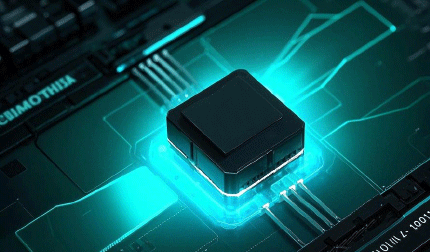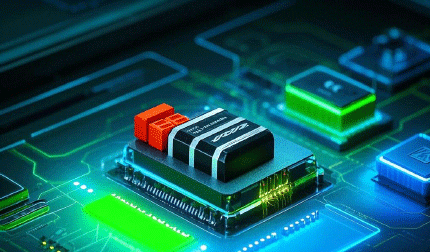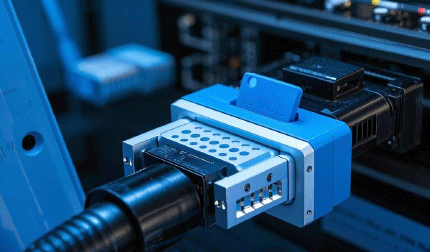In the intricate world of modern electronics, where the seamless operation of devices is crucial, transient voltage suppressors (TVSs) have emerged as silent guardians, playing a pivotal role in safeguarding electronic components from the perils of unexpected voltage surges. These unassuming yet powerful components are at the forefront of protecting a wide array of electronic devices, from the tiniest wearables to large - scale industrial machinery.
1. Understanding Transient Voltage Suppressors
1.1 Principle of Operation
A transient voltage suppressor is a specialized electronic component designed to protect circuits from voltage spikes or transients. When a normal operating voltage is applied across a TVS, it exhibits a high impedance, effectively acting as an open circuit and allowing the normal flow of current through the circuit. However, when a voltage transient, which can be caused by various factors such as lightning strikes, electromagnetic interference (EMI), electrostatic discharge (ESD), or switching operations in power supplies, exceeds a certain threshold level, the TVS rapidly changes its state.
It switches to a low - impedance state, diverting the excess current away from the sensitive components in the circuit. This is achieved through the use of semiconductor materials, typically silicon. In the case of avalanche - breakdown - type TVSs, when the voltage across the device reaches the avalanche breakdown voltage, a large number of electron - hole pairs are generated, creating a conductive path for the excess current. Zener - diode - based TVSs operate on a similar principle, using the Zener breakdown effect to clamp the voltage at a predefined level.

1.2 Types of Transient Voltage Suppressors
There are several types of TVSs available in the market, each with its own unique characteristics and applications.
-
Unidirectional TVSs: These are designed to protect circuits from voltage transients in one direction only. They are commonly used in applications where the voltage polarity is fixed, such as in DC - powered circuits. Unidirectional TVSs are highly effective in protecting against positive - going voltage spikes in a circuit with a fixed - polarity power supply.
-
Bidirectional TVSs: As the name implies, bidirectional TVSs can protect circuits from voltage transients in both positive and negative directions. They are ideal for applications where the voltage polarity can change, such as in AC - powered circuits or in data - communication lines where signals can have both positive and negative swings. Bidirectional TVSs are often used in Ethernet ports, USB interfaces, and other communication interfaces to protect against ESD and voltage surges.
-
Surface - Mount TVSs: These are designed for surface - mount technology (SMT) applications, which are prevalent in modern electronics due to their small size and high - density packaging capabilities. Surface - mount TVSs are available in various package sizes, ranging from very small 0402 and 0603 packages to larger packages, depending on the power - handling requirements. They are widely used in smartphones, tablets, and other portable electronic devices where space is at a premium.
-
Through - Hole TVSs: Through - hole TVSs are suitable for applications where larger power - handling capabilities are required or where the traditional through - hole soldering process is preferred. They are often used in industrial electronics, power supplies, and automotive applications, where the components need to withstand higher currents and voltages.2. Market Dynamics of Transient Voltage Suppressors
2.1 Market Size and Growth
The global market for transient voltage suppressors has been experiencing steady growth in recent years. This growth can be attributed to several factors. Firstly, the increasing demand for electronic devices across various industries, including consumer electronics, automotive, industrial, and telecommunications, has led to a corresponding increase in the need for reliable over - voltage protection.
In the consumer electronics segment, the proliferation of smartphones, tablets, laptops, and other portable devices has created a huge market for TVSs. These devices are highly sensitive to voltage surges, and even a minor transient can cause damage to the internal components, leading to costly repairs or device failure. As a result, manufacturers are incorporating TVSs into their designs to ensure the reliability and longevity of their products.
The automotive industry is another major driver of the TVS market. With the increasing electrification of vehicles, including the development of electric vehicles (EVs) and hybrid electric vehicles (HEVs), there is a greater need for protection against voltage transients in the vehicle's electrical and electronic systems. TVSs are used in various automotive applications, such as battery management systems, electric motor controllers, and in - vehicle infotainment systems, to protect against voltage spikes caused by inductive loads, ESD, and other sources.
The industrial sector also contributes significantly to the growth of the TVS market. In industrial applications, such as factory automation, power generation, and distribution, electronic equipment needs to be protected from voltage surges caused by lightning strikes, power grid fluctuations, and electromagnetic interference. TVSs are used in programmable logic controllers (PLCs), motor drives, and other industrial control systems to ensure their reliable operation in harsh environments.
2.2 Market Trends
One of the notable trends in the TVS market is the miniaturization of components. As the demand for smaller and more compact electronic devices continues to grow, manufacturers are developing TVSs in smaller package sizes without sacrificing their performance. This has led to the development of ultra - small surface - mount TVSs, which are capable of providing high - level protection in a very small footprint.
Another trend is the increasing demand for TVSs with higher power - handling capabilities. In applications such as high - power industrial equipment and electric vehicles, where large amounts of power are involved, TVSs need to be able to handle higher currents and voltages to provide effective protection. Manufacturers are constantly researching and developing new materials and manufacturing processes to improve the power - handling capabilities of TVSs.
The integration of TVSs with other components is also becoming more common. For example, some manufacturers are integrating TVSs with capacitors or resistors to create multifunctional components that can provide both over - voltage protection and other functions, such as filtering or impedance matching. This integration not only reduces the number of components in a circuit but also saves space and cost.
3. Applications of Transient Voltage Suppressors
3.1 Consumer Electronics
In consumer electronics, TVSs are used in a wide range of devices to protect against voltage surges. In smartphones, TVSs are used to protect the charging circuit, the display, and the various communication interfaces, such as the USB port, the headphone jack, and the Wi - Fi and Bluetooth modules. A voltage surge during charging, for example, can damage the battery or the charging circuit, and a TVS can prevent this by diverting the excess current away from the sensitive components.
In laptops, TVSs are used in the power supply unit, the motherboard, and the external interfaces. The power supply unit is particularly vulnerable to voltage surges, and a TVS can protect the components in the power supply from damage. The motherboard, which contains the CPU, the memory, and other critical components, also needs to be protected from voltage transients, and TVSs are used to ensure the reliable operation of these components.
3.2 Automotive Industry
In the automotive industry, TVSs play a crucial role in protecting the vehicle's electrical and electronic systems. In electric vehicles, TVSs are used in the battery management system to protect the battery cells from over - voltage and under - voltage conditions. The battery management system is responsible for monitoring and controlling the charging and discharging of the battery, and any voltage transients can cause damage to the battery cells or the associated electronics.
TVSs are also used in the electric motor controller, which is responsible for controlling the speed and torque of the electric motor. The electric motor controller is a high - power device that is susceptible to voltage surges caused by inductive loads, such as the motor itself. TVSs can protect the components in the motor controller from damage, ensuring the reliable operation of the electric motor.
In addition, TVSs are used in the in - vehicle infotainment system, the lighting system, and the various sensors in the vehicle, such as the airbag sensors and the tire - pressure sensors. These components need to be protected from voltage transients to ensure their accurate operation and the safety of the vehicle occupants.
3.3 Industrial Applications
In industrial applications, TVSs are used in a variety of equipment to protect against voltage surges. In factory automation, TVSs are used in PLCs, motor drives, and robotic systems. PLCs are used to control the operation of industrial processes, and any voltage transients can cause errors in the control logic or damage to the components. TVSs can protect the PLCs from voltage surges, ensuring the smooth operation of the industrial processes.
Motor drives are used to control the speed and torque of industrial motors, and they are often exposed to voltage surges caused by the motor's inductive load. TVSs can protect the motor drives from these voltage surges, improving the efficiency and reliability of the motor operation.
In power generation and distribution, TVSs are used to protect the electrical equipment from voltage surges caused by lightning strikes, power grid fluctuations, and switching operations. Transformers, circuit breakers, and other power - system components need to be protected from voltage transients to ensure the stable operation of the power grid.
4. Technological Advancements in Transient Voltage Suppressors
4.1 Material Innovations
The development of new materials has been a significant factor in the advancement of TVS technology. Traditional TVSs are typically made of silicon, but researchers are exploring the use of other materials, such as gallium nitride (GaN) and silicon carbide (SiC), to improve the performance of TVSs.
GaN and SiC are wide - bandgap semiconductors, which offer several advantages over silicon. They have a higher breakdown voltage, a higher electron mobility, and a lower on - resistance. These properties make GaN - and SiC - based TVSs more suitable for high - voltage and high - power applications. For example, in high - power industrial equipment, GaN - based TVSs can provide faster response times and higher power - handling capabilities compared to silicon - based TVSs.
4.2 Packaging Technology
Packaging technology has also made significant progress in recent years. The development of advanced packaging techniques has allowed for the miniaturization of TVSs while improving their performance. For example, the use of flip - chip packaging technology has reduced the size of TVSs and improved their electrical performance by reducing the parasitic inductance and capacitance.
Another packaging innovation is the use of multi - layer ceramic packaging (MLCP) for TVSs. MLCP offers excellent thermal and electrical properties, allowing for better heat dissipation and improved electrical performance. This type of packaging is particularly suitable for high - power TVSs, which need to dissipate a large amount of heat during operation.
4.3 Integration with Other Components
The integration of TVSs with other components is an emerging trend in the field of TVS technology. As mentioned earlier, some manufacturers are integrating TVSs with capacitors, resistors, or other semiconductor components to create multifunctional devices. This integration not only reduces the size and cost of the overall circuit but also improves the performance and reliability of the system.
For example, the integration of a TVS with a capacitor can create a device that can both protect against voltage surges and filter out high - frequency noise. This is particularly useful in applications where the circuit needs to be protected from both voltage transients and electromagnetic interference.
5. Challenges and Future Outlook
5.1 Challenges
Despite the many advancements in TVS technology, the industry still faces several challenges. One of the main challenges is the need to balance performance, size, and cost. As the demand for smaller and more powerful TVSs increases, manufacturers need to find ways to improve the performance of TVSs while reducing their size and cost. This requires continuous research and development in materials, manufacturing processes, and packaging technology.
Another challenge is the increasing complexity of electronic systems. As electronic devices become more sophisticated, with more components and higher - speed interfaces, the requirements for over - voltage protection become more stringent. TVSs need to be able to protect against a wider range of voltage transients, including those with very short rise times and high amplitudes.
The compatibility of TVSs with different types of electronic components and systems is also a concern. TVSs need to be designed to work seamlessly with other components in the circuit, without causing any interference or degradation in performance.
5.2 Future Outlook
Looking ahead, the future of transient voltage suppressors looks promising. The continued growth of the electronics industry, especially in emerging markets, will drive the demand for TVSs. As new applications, such as the Internet of Things (IoT), artificial intelligence (AI), and autonomous vehicles, continue to develop, the need for reliable over - voltage protection will become even more critical.
Technologically, we can expect to see further advancements in materials, packaging, and integration. The development of new wide - bandgap materials and advanced packaging techniques will lead to the creation of more efficient and powerful TVSs. The integration of TVSs with other components and the development of smart TVS solutions, which can adapt to different operating conditions, will also be areas of focus.
In conclusion, transient voltage suppressors are an essential component in the modern electronics ecosystem. Their ability to protect electronic devices from voltage surges is crucial for ensuring the reliability and longevity of these devices. As the electronics industry continues to evolve, TVSs will play an increasingly important role in safeguarding the performance of a wide range of electronic systems.






